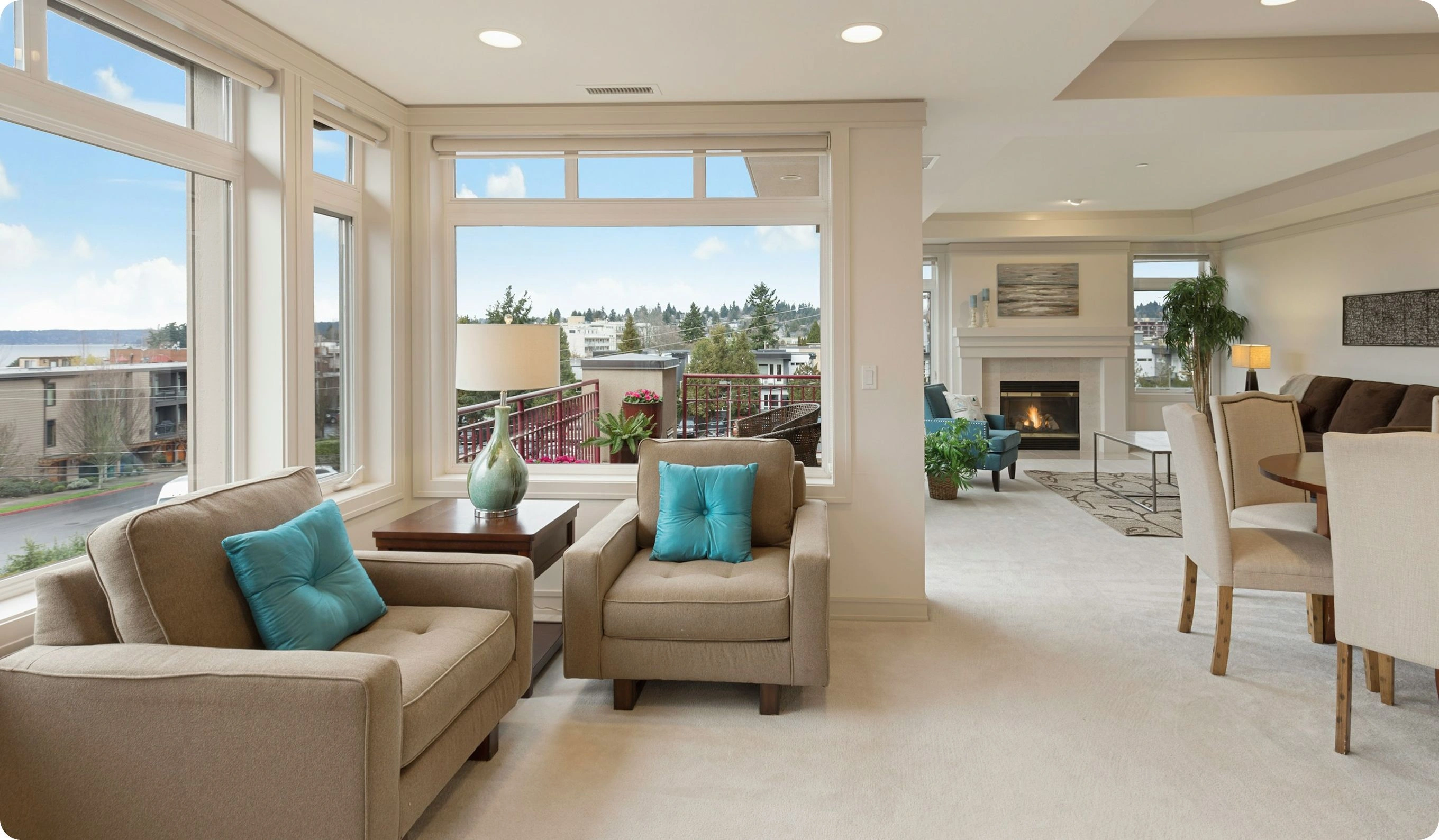Secondary real estate in New ZealandHousing where coastlines meetpastures and peace

Popular
cities and regions in New Zealand
Best offers
in New Zealand
Benefits of investment in
New Zealand real estate
Global lifestyle destination with long-term value
New Zealand combines breathtaking nature, political stability, and one of the world’s highest quality-of-life rankings — factors that support resilient property demand.
Consistent market performance in core cities
Auckland and Wellington see steady appreciation and low vacancy, especially in family and professional rental segments.
Transparent ownership with legal clarity
Buyers benefit from clear title registration, strong rule of law, and institutional-grade property governance.
Global lifestyle destination with long-term value
New Zealand combines breathtaking nature, political stability, and one of the world’s highest quality-of-life rankings — factors that support resilient property demand.
Consistent market performance in core cities
Auckland and Wellington see steady appreciation and low vacancy, especially in family and professional rental segments.
Transparent ownership with legal clarity
Buyers benefit from clear title registration, strong rule of law, and institutional-grade property governance.

Useful articles
and recommendations from experts
Main title about secondary real estate in New Zealand
Why secondary properties attract buyers
Secondary real estate in New Zealand appeals to investors and owner-occupiers seeking immediate occupancy and proven returns in one of the world’s most stable markets. Unlike off-plan developments that can face planning delays, construction cost overruns and regulatory complexities, resale homes—villas, bungalows, apartments and townhouses—across major centres come turnkey ready. Properties connect to the national water grid managed by Watercare Services (Auckland) or Wellington Water, uninterrupted power via Transpower’s grid with local backup generators, mature stormwater and wastewater networks, sealed state highways maintained by Waka Kotahi NZTA, and high-speed fibre broadband under the Ultra-Fast Broadband (UFB) initiative delivered by Spark and Vodafone. Many houses preserve distinctive New Zealand design elements—native-timber cladding, corrugated-iron roofs, expansive decks overlooking mountains or harbours—while interiors feature modern upgrades: double-glazed windows rated for alpine and coastal climates, bespoke open-plan kitchens with Bosch or Fisher & Paykel appliances, reinforced concrete foundations engineered for seismic zones, underfloor heating systems and integrated smart-home controls. This genuine turnkey readiness dramatically reduces holding costs, accelerates rental income and empowers buyers—from holiday-let operators and corporate transferees to buy-to-let investors and downsizing retirees—to begin generating returns or enjoying country-wide lifestyle living from day one.
Established neighbourhoods
New Zealand’s resale market is underpinned by several mature precincts, each with unique advantages. In Auckland, suburbs like Herne Bay, Devonport and Mission Bay offer heritage villas and seaside apartments with private moorings, communal gardens and harbour views. Wellington’s Oriental Bay, Kelburn and Karori combine hillside bungalows, Edwardian-era homes and modern high-rise flats with panoramic city and harbour vistas. Queenstown’s Frankton, Kelvin Heights and Arrowtown precincts feature alpine lodges and luxury condos near ski fields, golf courses and lakefront promenades. Christchurch’s Fendalton, Merivale and Sumner host refurbished character homes and coastal bungalows benefiting from post-quake rebuild quality standards. Across all regions, civic services—including reliable public transport (Auckland’s rail network, Wellington’s bus and ferry links, Queenstown’s shuttle services), high-quality schools and hospitals (Auckland City Hospital, Wellington Regional Hospital, Queenstown Health Centre)—operate seamlessly, ensuring minimal post-purchase capex and consistent tenant satisfaction.
Who buys secondary real estate
Buyer profiles in New Zealand’s resale segment reflect the market’s diversity. International and domestic holiday-let investors acquire lakefront and coastal homes near Queenstown, Rotorua and Bay of Islands, leveraging high-season yields and VelesClub Int.’s property-management expertise. Expatriate professionals—particularly in finance, tech and government roles—secure turnkey apartments in Auckland’s CBD, Wellington’s Thorndon and Hamilton’s Chartwell for immediate relocation and tenancy convenience. Local families purchase multi-bedroom homes in established suburbs—Orakei, Parnell, Mount Roskill in Auckland; Miramar, Lyall Bay in Wellington; Fendalton, Spreydon in Christchurch—prioritizing school zones (Auckland Grammar, Wellington College) and community networks. Downsizing retirees from Auckland and Wellington choose waterfront cottages and low-maintenance units in coastal enclaves like Devonport and Oriental Bay. Diaspora investors from the UK, China and Australia target multi-unit residential blocks in emerging precincts—Auckland’s Hobsonville, Wellington’s Johnsonville—for portfolio diversification, guided by documented occupancy and exit-strategy modelling by VelesClub Int. Common drivers across segments include immediate move-in readiness, transparent title chains, and integration into mature civic and transport infrastructures that underpin predictable returns.
Market types and price ranges
New Zealand’s secondary real-estate landscape spans a broad continuum. Entry-level one-bedroom apartments and studios in suburban fringes—Papatoetoe (Auckland), Newlands (Wellington), Riccarton (Christchurch)—start from approximately NZD 400,000 to NZD 650,000 (USD 240,000–390,000), offering turnkey finishes and proximity to public transport. Mid-range two- to three-bedroom townhouses and villas in Herne Bay, Devonport, Kelburn, Merivale trade between NZD 700,000 and NZD 1.5 million (USD 420,000–900,000), featuring granite countertops, modern baths, private balconies and secure parking. Premium detached estates and luxury penthouses in Parnell, Oriental Bay, Queenstown CBD command NZD 2 million to over NZD 5 million (USD 1.2 million–3 million)—driven by harbour or mountain frontage, bespoke interiors, landscaped grounds and top-tier amenities. For portfolio investors, small multi-unit complexes (4–8 units) in emerging belts—Hobsonville Point, Johnsonville, Christchurch’s Addington—list between NZD 1 million and NZD 3 million, delivering diversified rental streams. Financing through ANZ, BNZ and Westpac NZ offers competitive mortgage rates (4%–5% per annum) with down payments of 20%–30%. Documented net rental yields average 5%–7% per annum across core corridors—benchmarks integrated by VelesClub Int. into proprietary yield-modelling and strategic acquisition tools.
Legal process and protections
Acquiring secondary real estate in New Zealand follows the Land Transfer Act and conveyancing practice under the Property Law Act. Transactions begin with a signed Agreement for Sale and Purchase and payment of a deposit—commonly 10%—held in trust by the vendor’s solicitor. Buyers commission due diligence: title search via Landonline to confirm registered fee simple title and encumbrances; LIM report from local council; building-condition and invasive-weed inspections; and utility-connection verification for water, power and broadband. Upon satisfactory review, the balance is remitted and settlement occurs—title is transferred via electronic conveyancing, and key handover is executed. Non-resident buyers receive the same title protection, though OIO approval may be required for sensitive land. Statutory warranties against latent defects apply when vendor disclosure obligations are met. VelesClub Int. coordinates each step—due diligence management, legal drafting, council liaison and settlement logistics—to ensure compliance, mitigate risk and deliver a seamless closing for domestic and international clients.
Best areas for secondary market
Certain micro-markets in New Zealand stand out for infrastructure maturity and rental dynamics. Auckland’s Inner City—Ponsonby, Grey Lynn, Mount Eden—yields net returns of 4%–6% due to continual urban demand. Wellington’s CBD fringe—Te Aro, Pipitea—sustains 5%–7% yields backed by government tenancy and academic tenants. Queenstown’s Arrowtown and Frankton precincts deliver 6%–8% returns driven by tourism rentals. Christchurch’s Riccarton and Merivale achieve 5%–7% backed by student and professional leases. Hamilton’s Chartwell and Rototuna sustain 6% yields from family rentals. Emerging belts—Hobsonville’s mixed-use waterfront, Johnsonville’s retail-anchored precinct, Addington’s rail-adjacent redevelopment—offer 7%–9% yields as infrastructure upgrades progress. Each precinct benefits from sealed roads, reliable water and power mains, UFB broadband, integrated public transport and proximity to schools and hospitals—ensuring transparent pricing, stable occupancy and strong resale liquidity. VelesClub Int.’s proprietary neighbourhood-scoring methodology and on-the-ground research guide clients to the sub-markets that best align yield targets, capital-growth forecasts and lifestyle preferences within New Zealand’s dynamic secondary-real-estate ecosystem.
Why choose secondary over new + VelesClub Int. support
Opting for secondary real estate in New Zealand delivers immediate possession, proven civic infrastructure and transparent historical performance—advantages unmatched by speculative new builds subject to consenting delays, construction cost inflation and contractor risk. Buyers avoid pre-launch premiums and extended handover timelines by selecting turnkey assets with operational water, power and broadband networks, reinforced foundations and clear title. Secondary properties often showcase irreplaceable Kiwi architectural character—timber weatherboards, pitched roofs and expansive decks—that new builds cannot replicate, enhancing authenticity and long-term desirability. Lower entry premiums relative to off-plan schemes free up capital for interior personalization, sustainable upgrades (solar PV, rainwater harvesting) or strategic portfolio diversification across multiple micro-markets. Mature neighbourhood services—reliable regional water supply, uninterrupted Transpower electricity, sealed roads, integrated rail and bus links, and UFB broadband—ensure seamless move-in and minimal post-purchase maintenance. VelesClub Int. elevates the acquisition journey with comprehensive end-to-end expertise: sourcing exclusive off-market listings, conducting exhaustive due diligence, negotiating optimal terms and managing all legal formalities. Our post-closing property management solutions—tenant placement, preventive maintenance coordination and transparent performance reporting—optimize occupancy rates and preserve capital value over time. Through proactive portfolio monitoring, annual market reviews and strategic advisory, VelesClub Int. empowers clients to maximize New Zealand’s secondary real estate potential with confidence, clarity and operational efficiency.




